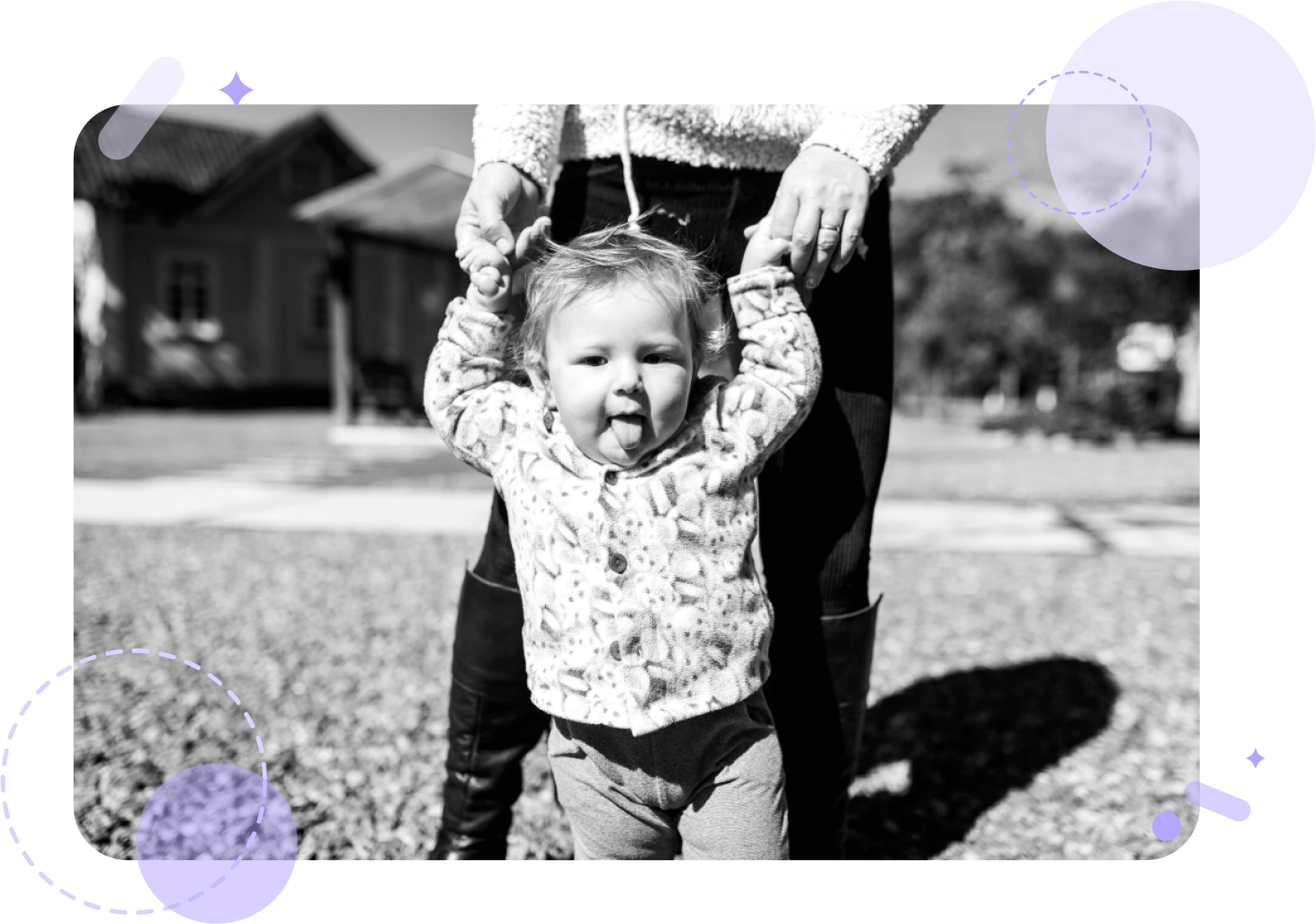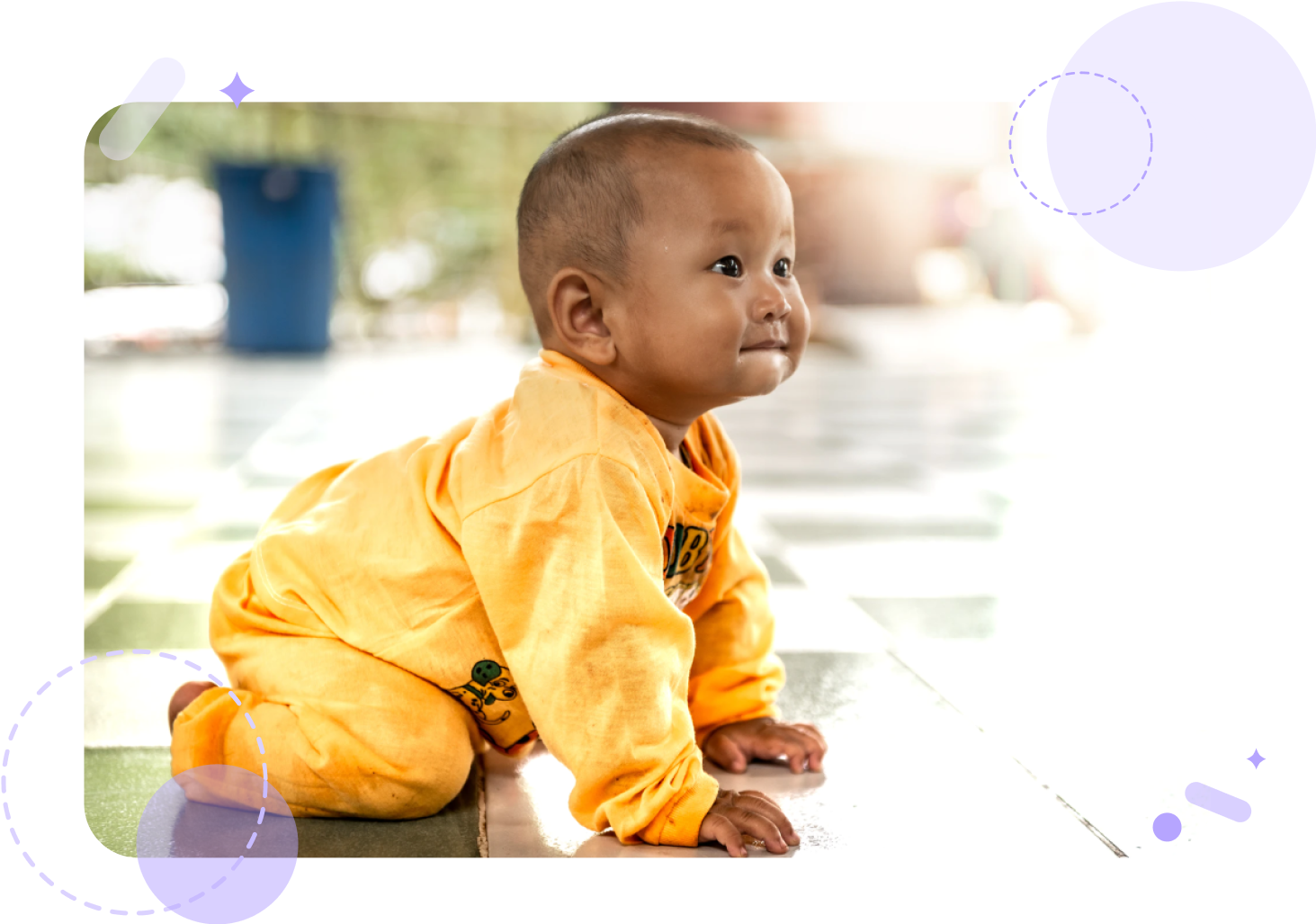
There’s nothing quite like seeing your baby walk towards you all on their own, ushering in a new era of interaction for your relationship.
Your baby’s walking journey begins with the Stepping reflex, in which your baby will move their legs as if walking when their feet touch a flat surface. This reflex is an important part of your baby’s growth as it helps proper development of their leg muscles, setting up correct leg movement to prepare your baby to take real steps between 9 and 12 months old.
Walking Along Furniture: Cruising
Before they learn to walk independently, your baby will probably take their first steps with a bit of help balancing against pieces of furniture for a feeling of security. Holding onto the edge of a small table or sofa, your baby will practice cruising along until they gain enough balance and confidence to wander off unsupported.
Most babies cling to cruising along the furniture for a considerable amount of time, afraid to reach out and walk without support. Leaning on furniture or their parent’s hands provides a supporting anchor that works as an automatic failsafe for maintaining balance.
Each baby advances at their own pace. Some babies skip this step altogether and go straight to walking by themselves, so don’t be concerned if your baby does not practice walking along furniture as they might skip right to fully independent walking!
How to Encourage Baby to Walk Unsupported?
Your baby needs to develop good balance and coordination skills before they can take their first steps independently. Once they have the necessary strength, they need to maintain a standing position, they will attempt to walk and eventually become more confident in their strides.
You can help encourage your baby to take the plunge and walk unsupported by staying close and offering a sense of security whenever they attempt to let go of that piece of furniture.
While your baby learns to take their first steps, they will be understandably wobbly on their feet. Given time and plenty of practice, your baby will build their balance and fine-tune their leg movements for improved mobility.
Offering A Safe Environment
As your baby takes their first few steps, their sense of mobility and independence will exponentially grow as they realize their increased capacity to explore. These few steps will become more numerous and refined with time, empowering your little one to engage more actively with their environment on their own two feet.
During the learning process, you can help protect your baby from potential fall hazards by baby-proofing new areas of your living space that were previously inaccessible. You might consider gating off stairs and doorways to create safe areas for exploration and close supervision.
Celebrate every seemingly small step by sitting on your baby’s level and opening your arms to welcome them to walk towards your embrace. Encourage your baby to stand independently with support first by holding furniture or your hand initially.
Through this journey, extra affection and encouragement will help your baby feel more comfortable with the process and drive their success.
 Back
Back

